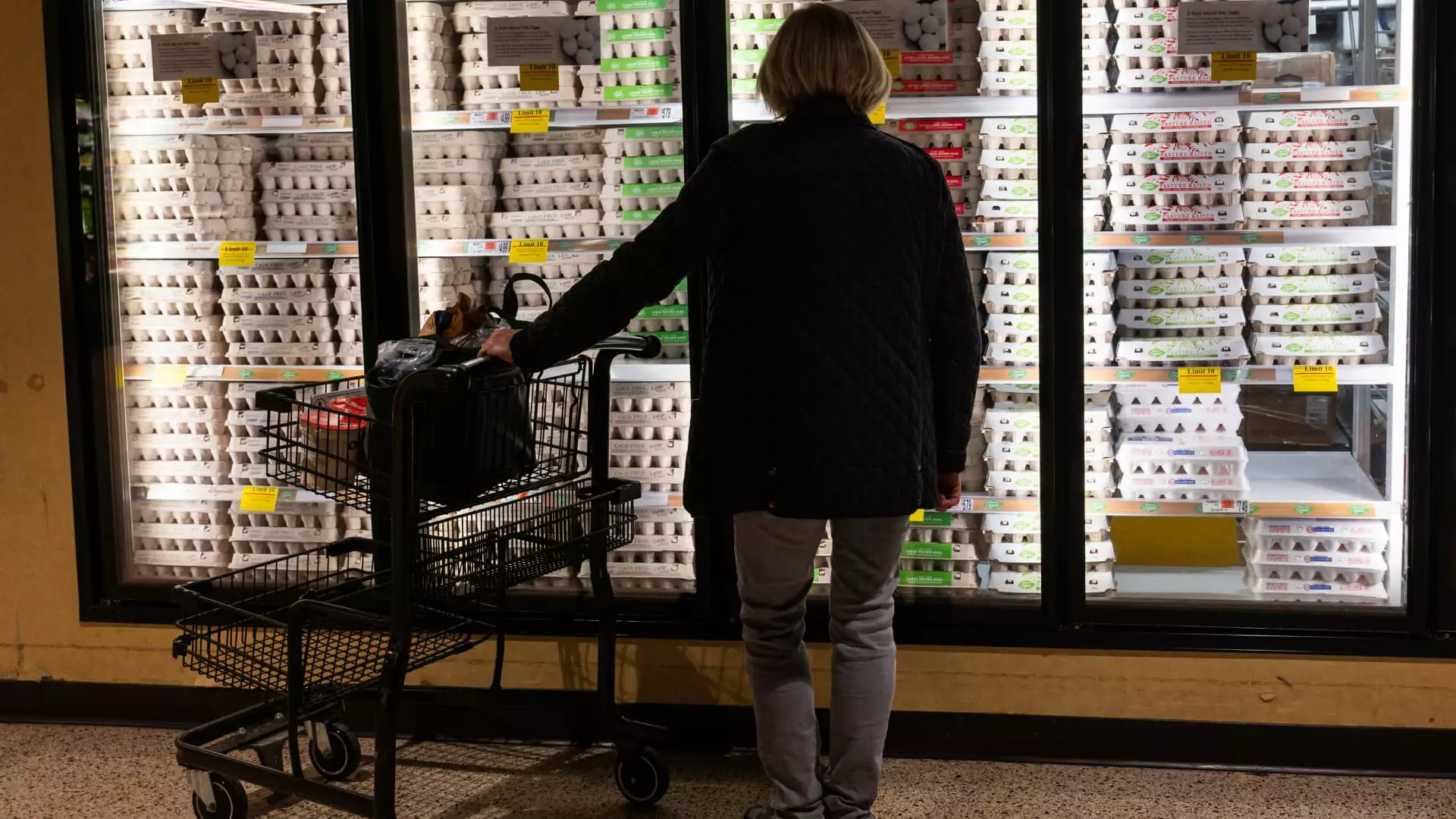In recent weeks, wholesale egg prices plummeted to $4.83 per dozen, a staggering 44% drop from the peak of $8.58 just a month prior. This dramatic decline comes after a period of unprecedented price hikes that left consumers grappling with the financial strain of inflated grocery bills. While many may be eager to celebrate this sudden reprieve, the reality is more nuanced than meets the eye. This reduction in wholesale prices raises critical questions about the future of retail egg prices and consumer access.
Consumers are breathing a sigh of relief, but the landscape remains precarious. Experts point out that a fall in wholesale prices does not immediately equate to relief for consumers. The lag time is often two to three weeks, during which shoppers continue to pay inflated retail prices. This transitional period could serve to reinforce a sense of uncertainty—a reminder that the market is susceptible to fluctuations that may not correlate to consumer expectations.
Underlying Issues: Beyond Just Supply and Demand
The chicken-and-egg problem (no pun intended) extends beyond simple supply and demand dynamics. While the recent easing of bird flu outbreaks has contributed to an improved egg supply, it’s essential to recognize that consumer behavior has also played a role. Many households, spooked by soaring prices, have already stocked their pantries with eggs, leading to a temporary decline in demand. This phenomenon harkens back to the panic-buying behavior witnessed during the early days of the COVID-19 pandemic.
So, while the fall in prices offers a glimmer of hope, it also underscores a troubling reality: consumers have lost faith in the stability of food pricing. The fear of rising costs has driven consumers to alter their purchasing habits, leading to additional supply chain complications.
Is the Egg Market Rigged? The Shadow of Antitrust Investigations
Compounding the uncertainty is the haunting specter of antitrust investigations within the egg supply chain. The U.S. Department of Justice is presently scrutinizing the pricing and supply practices of major egg producers. This scrutiny raises the alarming possibility that the price volatility consumers are experiencing is not merely a product of market forces, but rather indicative of manipulative practices within the industry. The unsettling prospect that powerful entities might control prices creates a chilling climate for consumers, who continue to face elevated costs with little transparency.
In this light, the dip in wholesale prices might appear more like a temporary concession than a signal of sustained affordability. The manipulation of supply by conglomerates can lead to unpredictable market behavior. If consumers feel that they are buying eggs at inflated prices against their will, the erosion of trust in these major producers could have dire long-term implications for consumer spending habits.
The Easter Effect: Short-term Gains or Sustained Change?
As Easter approaches, the demand for eggs is expected to rise, potentially negating any immediate benefits consumers might see from falling wholesale prices. Heightened seasonal demand typically leads to price increases, essentially counteracting the initial relief. The cyclical nature of consumer behavior around holidays indicates that any current price decline might be short-lived, leading back to the very volatility that consumers are most anxious to escape.
What’s more, egg producers are likely to capitalize on the seasonal spike, raising prices as consumers scramble to purchase items for festive celebrations. The larger question remains: how will average consumers manage their budgets amid these oscillating prices? With household finances already stretched thin, the reliance on eggs as a staple food could lead to challenging choices this holiday season.
The Mindset Shift: Are Consumers Ready for Change?
Ultimately, while falling wholesale prices should be met with cautious optimism, the pattern of consumer behavior suggests a broader issue: a need for a cultural shift in how we perceive food pricing. It is crucial for consumers to advocate for transparency and fairness in agricultural markets instead of simply accepting the status quo.
If consumers continue to behave reactively rather than proactively, they risk being trapped in an endless cycle of inflated prices, stockpiling, and unpredictable availability. Embracing a mindset focused on sustainable food practices and advocating for legislative reforms may be the key to long-term improvements in pricing and availability.
Before we can fully celebrate the fall in egg prices, we must critically examine the structures at play, demand accountability from producers, and push for a food system that serves consumers fairly—without the specter of market manipulation lingering overhead.

